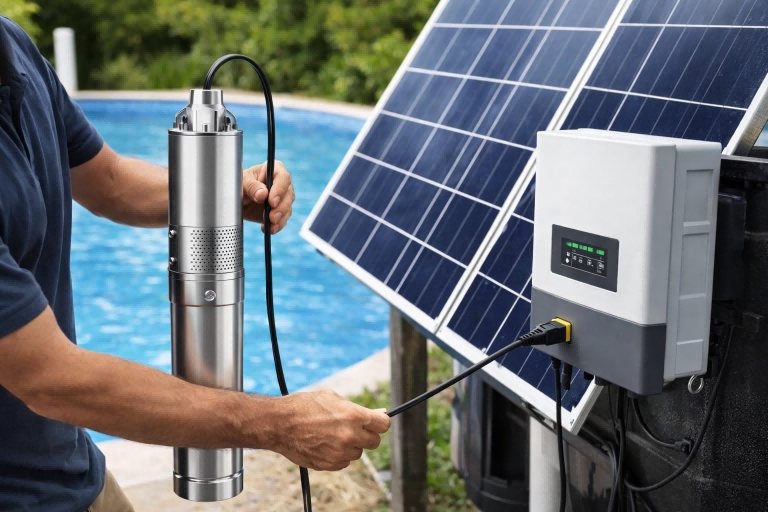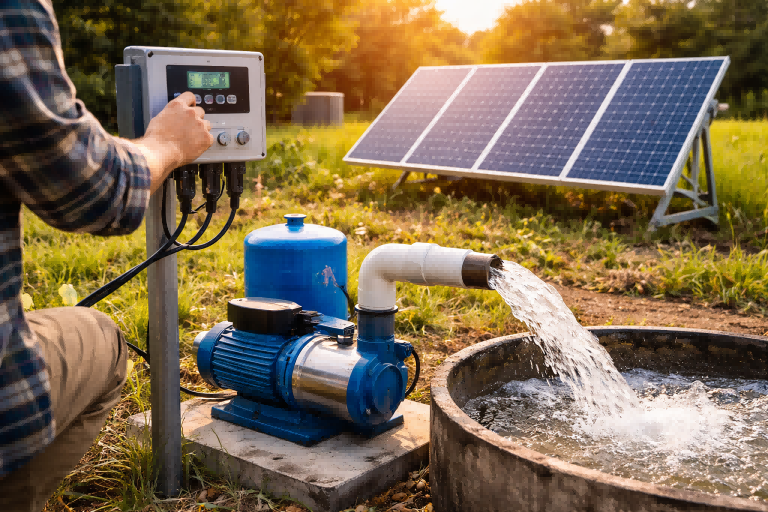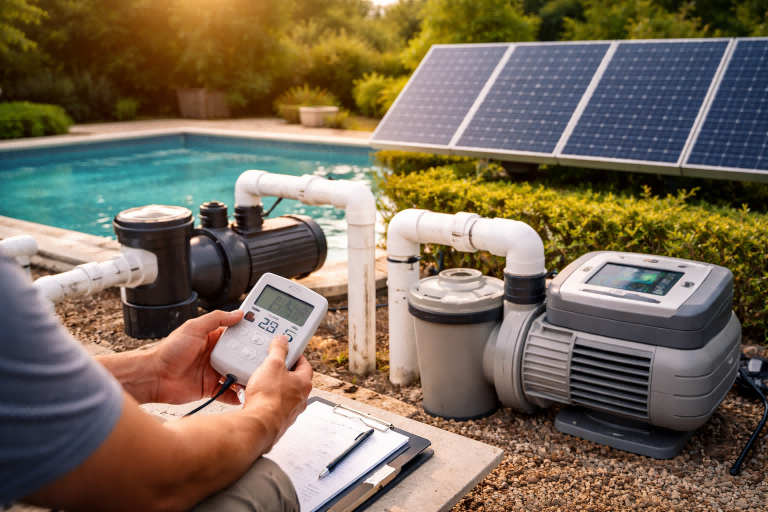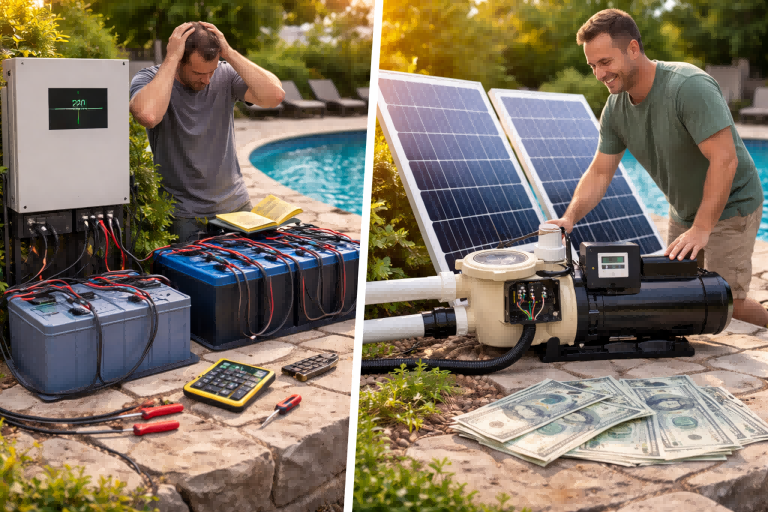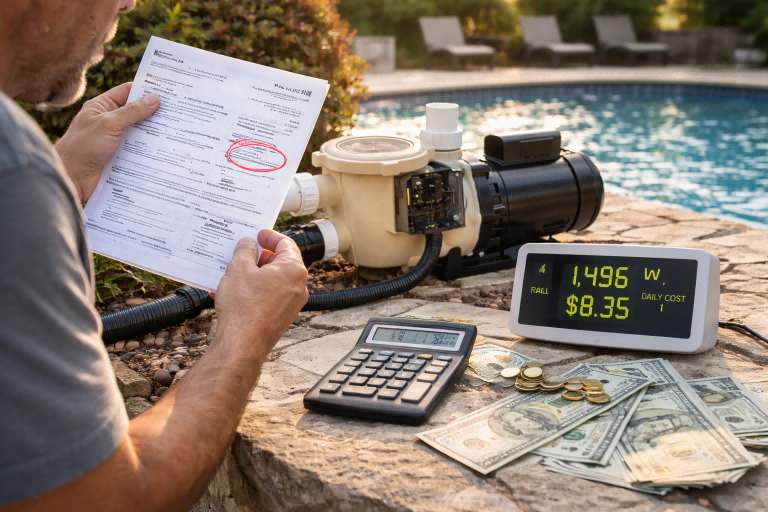Ever turn on your tap and get a weak trickle?
It's a frustrating start to the day.
Understanding your water system is the first step to fixing pressure problems for good.
A water supply system is a network that collects, treats, stores, and distributes water to homes and businesses. It starts at a natural source, goes through purification, and is then pumped through a series of pipes to reach your tap, ensuring it's both clean and delivered at adequate pressure.
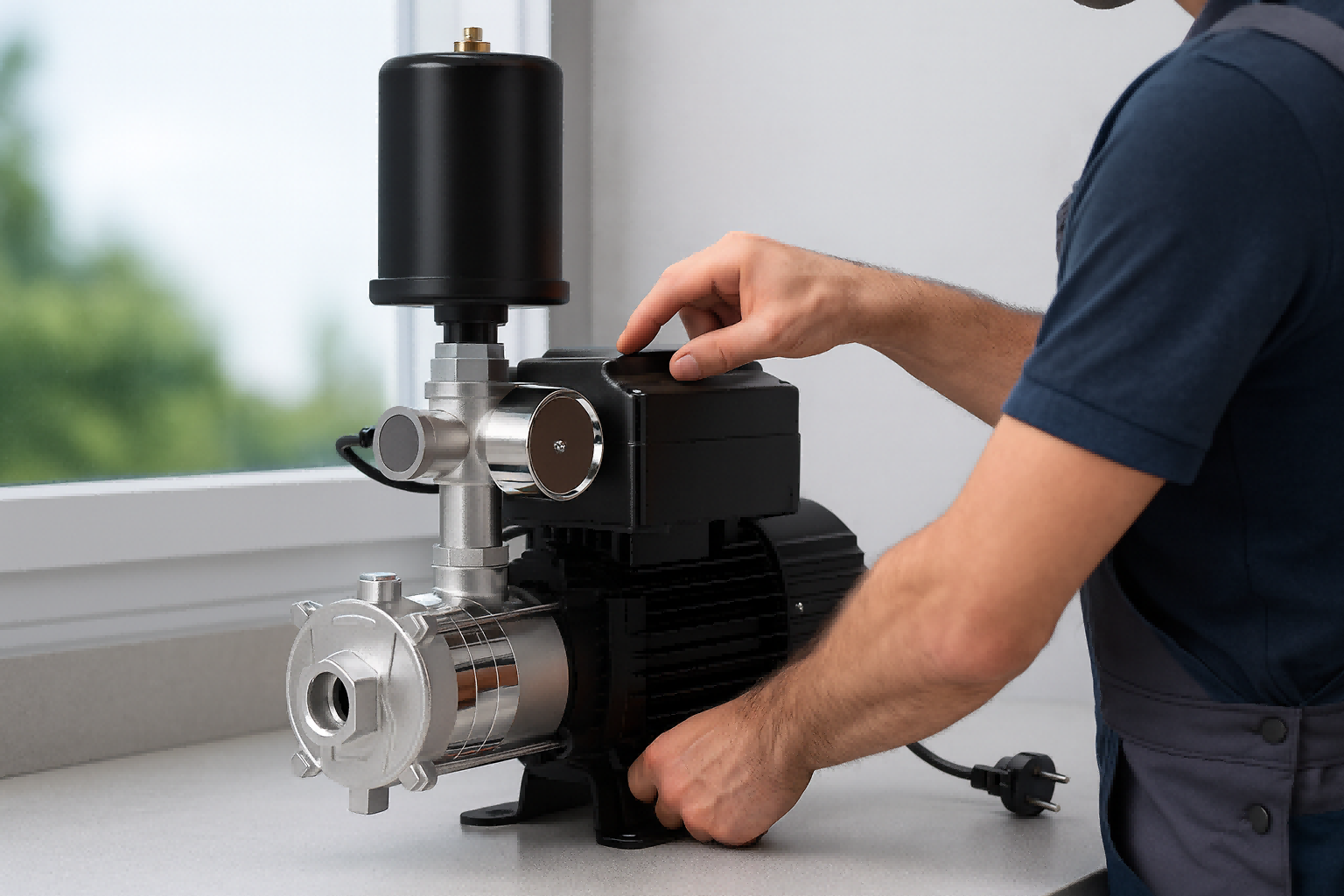
It's a journey that happens mostly out of sight.
This hidden network is a marvel of modern engineering.
From vast reservoirs to the pipes hidden in your walls, each part plays a vital role.
Let's follow the water's path from its natural source all the way to your faucet.
Understanding this journey helps you appreciate the complexity behind a simple glass of water.
It also gives you the knowledge to identify when things aren't working as they should.
Understanding the Water Source and Collection
Worried about where your water comes from?
The source can affect its quality and availability.
Knowing the origin is key to understanding the entire water supply chain.
Water sources are the natural starting points for any supply system. They are typically divided into surface water, like rivers and lakes, and groundwater, which is drawn from underground aquifers. The choice of source depends on geography, climate, and local demand.
The journey of your water begins long before it reaches any pipe.
It starts in nature.
The specific origin point of this water is the single most important factor in the entire system.
It determines the initial quality of the water.
It also dictates the type and intensity of treatment required.
Let's dive deeper into the two primary categories of water sources.
Surface Water Sources
Surface water is exactly what it sounds like.
It is water that is found on the surface of the Earth.
This is the most common source for large municipal water systems.
Think of rivers, lakes, and reservoirs.
These sources are relatively easy to access.
They can also hold vast quantities of water.
However, they are more exposed to the environment.
This exposure makes them vulnerable to contamination.
Pollutants from agriculture, industry, and urban runoff can easily enter these water bodies.
Therefore, surface water requires extensive treatment before it is safe to drink.
Groundwater Sources
Groundwater is found beneath the Earth's surface.
It is stored in porous rock and soil layers known as aquifers.
This water is accessed by drilling wells.
Groundwater is naturally filtered as it seeps through layers of rock, sand, and soil.
This filtration process means it often contains fewer contaminants than surface water.
As a result, it may require less treatment.
Many smaller communities and private homes rely on groundwater from wells.
However, groundwater is not immune to contamination.
Chemicals from pesticides or failing septic systems can seep into the ground and pollute aquifers.
It can also be a finite resource that is depleted if used faster than it is replenished by rainfall.
Comparing Water Sources
Each source has its own set of advantages and challenges.
The right choice for a community depends on many factors.
Here is a simple comparison:
| Feature | Surface Water (Rivers, Lakes) | Groundwater (Aquifers, Wells) |
|---|---|---|
| Accessibility | Easier to access large volumes. | Requires drilling wells to access. |
| Vulnerability | High (exposed to runoff, pollution). | Lower (naturally filtered by soil). |
| Treatment Required | Extensive (filtration, disinfection). | Often less extensive treatment. |
| Replenishment | Relatively fast (rainfall, snowmelt). | Slow (seepage over long periods). |
| Common Use | Large cities and municipalities. | Rural areas, private homes, smaller towns. |
Engineers must carefully study the local geology and climate.
They choose the most reliable and safest source available to build a sustainable water supply system.
This initial step is foundational to everything that follows.
The Water Treatment Process Explained
Is your tap water truly clean?
Concerns about invisible contaminants are common.
The multi-stage treatment process is designed to ensure every drop is safe for you and your family.
Water treatment is a critical process that removes contaminants and impurities to make water safe for consumption. It involves several stages, including coagulation, sedimentation, filtration, and disinfection, each targeting different types of pollutants to meet strict public health standards.
Once water is collected from its source, it cannot be sent directly to your home.
It must first undergo a thorough cleaning process.
This happens at a water treatment plant.
The goal is to remove anything that could be harmful to human health.
This includes dirt, algae, bacteria, viruses, and chemical pollutants.
The process is a sophisticated, multi-step operation.
Each step is designed to remove specific types of impurities.
Let's break down the key stages involved in making our water safe.
Stage 1: Coagulation and Flocculation
The first step targets tiny particles suspended in the water.
These particles can make the water look cloudy or turbid.
They are too small to be filtered out easily.
To solve this, chemicals called coagulants are added to the water.
Common coagulants include aluminum sulfate.
These chemicals have a positive charge.
They neutralize the negative charge of the tiny particles like dirt and clay.
The particles then begin to stick together, forming larger, heavier particles called "floc."
The water is gently mixed to encourage more particles to clump together.
This process is called flocculation.
It prepares the water for the next stage.
Stage 2: Sedimentation
Now that the floc particles are larger and heavier, they can be separated.
The water flows into large, quiet tanks called sedimentation basins.
In these calm conditions, gravity takes over.
The heavy floc particles slowly settle to the bottom of the tank.
This forms a layer of sludge.
The sludge is later removed and processed.
The clearer water at the top of the basin then moves on to the filtration stage.
Sedimentation effectively removes a large majority of the suspended solids.
Stage 3: Filtration
Even after sedimentation, some smaller particles may remain.
The filtration stage is designed to remove these.
Water passes through several layers of filters.
These filters are typically made of sand, gravel, and charcoal.
Each layer removes progressively smaller particles.
- Gravel filters out larger debris.
- Sand removes finer suspended particles.
- Activated charcoal is crucial for removing organic compounds, which can affect taste and odor.
This process mimics the natural filtration that occurs with groundwater.
It ensures the water is clear and free of most physical impurities.
Stage 4: Disinfection
The final and most important step is disinfection.
Filtration removes particles, but it may not eliminate all microorganisms.
Bacteria, viruses, and other pathogens must be killed.
This is done by adding a disinfectant to the water.
The most common disinfectant is chlorine.
Chlorine is highly effective at killing harmful microbes.
A small, carefully controlled amount is added to the water.
This amount is enough to kill any remaining pathogens and provide a residual level of protection.
This residual chlorine helps keep the water safe as it travels through the pipes to your home.
Other disinfection methods, like ozone or ultraviolet (UV) light, can also be used.
After disinfection, the water is tested to ensure it meets strict safety standards before it is sent on its way.
How Water is Stored and Distributed
Ever wonder how water is ready the instant you need it?
Sudden demand spikes could empty pipes quickly.
A network of storage tanks and pipes ensures a reliable supply is always on standby for everyone.
After treatment, water is stored in reservoirs and elevated water towers to ensure a consistent supply. It is then distributed through a vast underground network of pipes, called water mains, that branch out to deliver water to every home and business in a community.
Clean water from the treatment plant is now ready for its journey.
But it doesn't travel directly to your faucet.
The system needs to manage demand, which can change dramatically throughout the day.
Think about morning routines when everyone is showering.
Or evening times when people are cooking and cleaning.
To handle these peaks, the system relies on storage and a carefully planned distribution network.
This infrastructure is key to providing a reliable and pressurized water supply.
Let's look at how this critical part of the system works.
Water Storage Solutions
The primary purpose of water storage is to balance supply and demand.
Treatment plants operate most efficiently when producing water at a steady rate.
Storage facilities allow this steady production to meet fluctuating consumer needs.
There are two main types of storage facilities.
1. Ground-Level Reservoirs
These are large, covered tanks built at ground level or buried underground.
They can store massive volumes of treated water.
They act as the main holding point for water before it enters the distribution network.
Because they are at ground level, pumps are required to push the water into the distribution pipes and maintain pressure.
2. Elevated Water Towers
Water towers are a familiar sight in many landscapes.
Their height serves a crucial purpose: gravity.
Water is pumped up into the tower, usually during periods of low demand like overnight.
When demand increases, the water flows out of the tower and into the mains.
The force of gravity provides the pressure needed to push the water through the pipes.
This reduces the reliance on pumps, saving energy.
Water towers also provide an emergency supply in case of a power outage or main pump failure.
The Distribution Network
The distribution network is the "road system" for water.
It's a complex web of underground pipes that carries water to its final destination.
This network is carefully designed to be efficient and redundant.
Key Components of the Network
A distribution system is more than just pipes.
It includes several important components.
- Trunk Mains: These are the largest pipes. They transport large quantities of water from the treatment plant to the storage facilities and across the city.
- Distribution Mains: These are smaller pipes that branch off from the trunk mains. They run along streets, delivering water to different neighborhoods.
- Service Lines: These are the smallest pipes. They connect the distribution main on your street to the water meter and plumbing system of a single house or building.
- Valves: Valves are installed throughout the network. They allow sections of the system to be shut off for repairs or maintenance without disrupting the entire city's water supply.
- Fire Hydrants: Hydrants provide firefighters with quick and easy access to large amounts of water.
This entire network must be carefully maintained to prevent leaks and breaks.
A leak in a large trunk main can lead to significant water loss and service disruptions.
Regular inspection and repair are essential for an effective distribution system.
The Critical Role of Water Pressure in a Supply System
Frustrated by a weak shower?
It's a clear sign of low water pressure.
Pressure is the invisible force that makes your entire home's plumbing useful and efficient.
Water pressure is the force that pushes water through pipes. It is essential for delivering water from the mains to the highest floors of buildings. This pressure is created by pumps and the height of water towers, and it must be carefully regulated across the system.
We've followed water from its source, through treatment, and into the distribution pipes.
But none of that matters if the water can't get out of your faucet with enough force.
That force is called water pressure.
It's one of the most important and noticeable aspects of a water supply system for the end user.
Without adequate pressure, water might only trickle from your taps.
Showers would be weak, and appliances like washing machines might not work correctly.
Let's explore how this pressure is created, managed, and why it's so important.
How is Water Pressure Generated?
Pressure in a water system doesn't just happen.
It is deliberately created and managed in two primary ways.
1. Gravity Feed
As mentioned before, elevated water towers are a key tool.
The height of the water in the tower creates "head pressure."
For every 10 meters of height, the pressure increases by approximately 1 bar (or 14.5 PSI).
By placing towers at high points in the landscape, a city can use gravity to supply consistent pressure to the areas below.
This is an energy-efficient and reliable method.
2. Pumping Systems
Gravity alone isn't always enough.
In flat areas, or to supply water to tall buildings, pumps are essential.
Large pumps at the water treatment plant or along the distribution network push water through the mains.
These pumps must be powerful enough to overcome the friction of water moving through pipes.
They also have to lift the water to higher elevations.
The Booster Pump Solution
In many situations, the pressure from the municipal main is not sufficient.
This is common in:
- Homes at the end of a long supply line.
- Houses located on a hill.
- Tall buildings with multiple floors.
In these cases, a booster pump is required.
A booster pump is a device that increases the pressure of water coming into a building.
It essentially takes the incoming pressure and "boosts" it to a more desirable level.
Introducing Variable Speed Drive (VSD) Technology
Traditional booster pumps run at a single, constant speed.
They are either on or off.
This can lead to wasted energy and pressure fluctuations.
A more advanced solution is a Variable Speed Drive (VSD) booster pump.
Also known as a VFD (Variable Frequency Drive) pump.
These are intelligent pumps.
They can adjust their motor speed in real-time based on water demand.
| Feature | Standard Booster Pump | VSD Booster Pump |
|---|---|---|
| Speed | Constant, fixed speed. | Variable, adjusts to demand. |
| Pressure | Can fluctuate. Sharp on/off cycles. | Perfectly constant and stable. |
| Energy Use | High. Always runs at 100% power. | Low. Uses only the energy needed. |
| Noise | Can be loud, especially on startup. | Much quieter, smooth operation. |
| Lifespan | Shorter due to mechanical stress. | Longer due to reduced wear and tear. |
When you open one tap, the VSD pump runs slowly.
If someone else starts a shower, the pump seamlessly speeds up to maintain constant pressure.
This intelligent management provides a superior user experience.
It also results in significant energy savings.
For property owners and distributors, VSD booster pumps represent the peak of modern water pressure management.
What Happens Inside Your Home: The Final Step
Feel like your home's plumbing is a mystery?
Problems can seem complex and expensive.
Understanding the final stretch of your water's journey gives you the power to spot issues early.
Inside your home, the water journey concludes. The service line connects to a water meter, then to a network of pipes that distributes water to faucets, showers, and appliances. A separate drain system safely carries wastewater away.
The water has traveled a long way to reach your property line.
But the journey isn't quite over yet.
The final stage of the water supply system is the plumbing inside your own home.
This is where the large-scale municipal system connects with your personal taps and fixtures.
This part of the system is the property owner's responsibility.
Knowing how it works is essential for maintenance and troubleshooting.
Let's trace the water's path through a typical house.
The Service Line and Water Meter
The connection point is the service line.
This is a pipe that runs from the public water main under the street into your home.
Just after it enters your property, it connects to the water meter.
The water meter is a device that measures the volume of water you use.
This is how the utility company calculates your bill.
The meter is also a useful diagnostic tool.
If you suspect a leak, you can turn off all water in your house and check if the meter is still running.
Right after the meter is the main shut-off valve.
This is a critical component.
In case of a major leak or plumbing emergency, this valve allows you to shut off the water supply to the entire house.
The Cold and Hot Water Systems
From the main shut-off valve, the pipe splits.
It begins to create two parallel systems inside your home's walls and floors.
The Cold Water System
One set of pipes carries cold water directly to various fixtures.
This includes:
- Toilets
- Kitchen sink (cold tap)
- Bathroom sinks (cold tap)
- Showers and bathtubs
- Washing machine
- Dishwasher
- Outdoor faucets
These pipes are typically made of copper, PVC, or PEX tubing.
The Hot Water System
The other main pipe directs cold water to your water heater.
The water heater, which can be a tank or a tankless unit, heats the water to a set temperature.
From the water heater, a new network of hot water pipes runs parallel to the cold water pipes.
It delivers hot water to all the fixtures that need it.
This includes sinks, showers, washing machines, and dishwashers.
The DWV System: Drains, Wastes, and Vents
Once the water is used, it must be safely removed.
This is the job of a completely separate plumbing system.
It is called the DWV (Drain-Waste-Vent) system.
- Drains and Waste Pipes: These are large-diameter pipes that use gravity to carry wastewater away from sinks, toilets, and showers. All of these pipes slope downwards towards the main sewer line.
- Vent Pipes: These are the pipes you might see sticking out of your roof. They are a crucial but often misunderstood part of the system. Vents allow air to enter the drainpipes. This air prevents a vacuum from forming, which would stop the water from draining properly. It also allows sewer gases to escape safely outside instead of into your home.
All the wastewater from your home eventually collects in a single main drain line.
This line exits your house and connects to the municipal sewer system or a private septic tank.
This completes the water's full cycle through your home.
Maintaining a Healthy Water Supply System
Do you take your clean water for granted?
A lack of maintenance can lead to costly failures.
Proactive care of both the public system and your home's plumbing ensures safe, reliable water for years.
System maintenance involves regular inspection and repair of pipes, pumps, and treatment facilities by the utility. For homeowners, it means checking for leaks, insulating pipes, and occasionally flushing the water heater to ensure longevity and water quality.
A water supply system is a massive and complex piece of infrastructure.
It works tirelessly 24 hours a day.
Like any complex system, it requires regular maintenance to function correctly.
Maintenance happens at both the large, municipal level and within your own home.
Neglecting maintenance can lead to problems.
These problems can range from poor water quality to catastrophic pipe breaks.
Let's look at what's involved in keeping the water flowing smoothly.
Municipal System Maintenance
Water utility companies have dedicated teams for maintenance.
Their work is essential for public health and safety.
Key Maintenance Activities
- Leak Detection and Repair: The vast network of underground pipes is aging in many cities. Utilities use acoustic sensors and other technologies to find hidden leaks. Fixing leaks saves a massive amount of water and prevents damage to roads and foundations.
- Pipe Replacement Programs: Old pipes, especially those made of lead or iron, are systematically replaced with modern materials like PVC or ductile iron. This improves water quality and reduces the risk of breaks.
- Valve Exercising: The thousands of valves in the system must be turned periodically. This prevents them from seizing up so they will work correctly during an emergency.
- Hydrant Flushing: You may have seen crews opening fire hydrants and letting water run. This is called flushing. It clears out sediment and stagnant water from the pipes, ensuring fresh water throughout the system and verifying the hydrants are operational.
- Pump and Motor Maintenance: The pumps that keep water pressurized are critical. They require regular servicing, lubrication, and inspection to prevent unexpected failures.
This ongoing work is a huge investment.
It is funded by the fees on your water bill.
Homeowner Maintenance Tips
As a homeowner, you are responsible for the plumbing on your property.
Simple, regular maintenance can prevent expensive emergencies.
It can also protect the quality of your water.
Simple Checks and Tasks
Here is a checklist for basic home water system maintenance.
| Task | Frequency | Why It's Important |
|---|---|---|
| Check for Leaks | Monthly | Look under sinks and around toilets for drips. A running toilet can waste hundreds of gallons per day. |
| Flush Water Heater | Annually | This removes sediment that builds up in the tank, improving efficiency and lifespan. |
| Clean Faucet Aerators | Every 6 months | Mineral deposits can clog aerators, reducing flow. Unscrew them and clean them with vinegar. |
| Test Main Shut-off Valve | Annually | Gently turn your main shut-off valve to ensure it isn't stuck. You need it to work in an emergency. |
| Insulate Pipes | Before Winter | In cold climates, insulating pipes in unheated areas like basements or crawlspaces prevents them from freezing and bursting. |
By taking these simple steps, you play your part.
You help maintain the integrity of the water supply system right up to its final destination.
A well-maintained system is efficient, safe, and reliable for everyone.
Conclusion
A water supply system is a complex journey.
It moves water from nature, through treatment and storage, and into your home.
Understanding it helps ensure you have safe, reliable water.
FAQs
What are the 3 main components of a water supply system?
The three core components are the source (river, aquifer), the treatment plant (purification), and the distribution system (pipes, pumps, and towers) that deliver the water to consumers.
How is water pressure created in a water system?
Water pressure is generated primarily by pumps, which push water through pipes, and by gravity from water stored in elevated towers. These work together to maintain consistent pressure.
What is the difference between a water main and a service line?
A water main is a large public pipe that runs under the street. A service line is the smaller pipe that connects the public water main to a single home or building.
Why do cities flush fire hydrants?
Cities flush hydrants to remove sediment and stagnant water from the pipes, which improves water quality. It also serves as a test to ensure the hydrants are working correctly for emergencies.
How can I increase the water pressure in my house?
If your home has low pressure, a professionally installed booster pump is the most effective solution. These pumps increase the force of the water entering your home's plumbing system.
What does a variable speed drive (VSD) pump do?
A VSD pump automatically adjusts its speed to match water demand. This provides perfectly constant pressure, operates quietly, and saves a significant amount of energy compared to standard pumps.
Where is the main water shut-off valve in a house?
The main shut-off valve is usually located where the main water service line enters the house. Look in the basement, a crawl space, or a utility closet near the front of the house.


